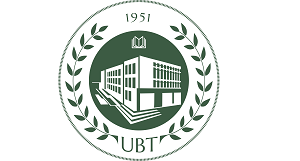BESMIRA XHAFERRI1*, AIDA BANI1, DOLJA PAVLOVA2, MUHARREM SALIHAJ1
1Environmental Department, Faculty of Agronomy and Environment, Agricultural University of Tirana, Koder-Kamez, Albania
2Department of Botany, Faculty of Biology, University of Sofia, bulvd. Dragan Tzankov 8, Sofia 1164, Bulgaria
*Corresponding author e-mail: besmiraxhaferri@yahoo.it
Abstract:
Phytoextraction uses hyperaccumulator plants that have the ability to accumulate very high concentrations of heavy metals from contaminated or metal rich soils in their shoots. Serpentine soils which contain relatively high concentrations of nickel (Ni) and some other metals are the preferred substrate for some plants, especially those that accumulate Ni in their tissues. The aim of this study was to determine; (i) the evaluation of Ni concentration in Alyssum murale plant during flowering; (ii) relationships between metal in the soil and Ni accumulation by different populations of A. murale. The study undertook in 2015-2016 on the southeastern area of the country in Pojskë, where the nickel hyperaccumulator species A. murale grows naturally. Collection of both plant samples (analysis of element concentrations in whole plant and each organ) and soil samples (analysis of total elements, DTPA-extractable Ni) allowed evaluation of phenotypic efficacy in hyperaccumulating Ni. Nickel availability in soils varied from 24.92 to 169.1 mg kg-1 depends on sites of collection and soil positions in Pojskë. The highest level of Ni in A. murale was found in the populations of Pojska-I (12267 mg kg-1) where the DTPA-extractable Ni was higher. Also, the highest Ni concentrations in leaves were found in plant of this population. Pojska’s sites are suitable for phytomining, because the level of nickel available is high, as well as the populations of A. murale are effective in terms of nickel uptake in their leaves and flowers, consequently in whole plants.
Keywords: Alyssum murale; hyperaccumulator; flowering stage; serpentine; plant organs.

